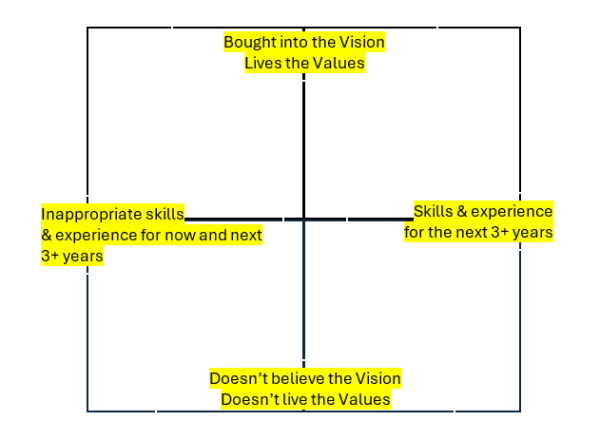Whether you’re a new or experienced Chief Executive, you’ll need to shift your style to suit the various leadership scenarios you may face. The uniqueness of the role is, in part, driven by the need for you to able to handle the differing role/expectations for your different stakeholder groups. To thrive in such an environment, leaders must develop an ability to adapt to change. It's the greatest difference between functional and executive leadership. Adaptability is the very definition of senior leadership.
The power of delegation for senior leaders
One of the most difficult transitions for leaders to make is the shift from doing to leading. As leaders rise in an organisation, they often need to change their focus from being the person who executes tasks to the one who guides and facilitates others to perform those tasks.
Successful senior leaders play a pivotal role in guiding their teams through these changes. They adopt the understanding that change is not only inevitable but also presents an opportunity for growth.
It's not just about embracing change; it's about becoming a catalyst for change and inspiring others to follow suit.
Agile leaders needs to build trust in their teams
Being an adaptable leader is not a solo endeavour – it’s a team sport and the roles your team play need to evolve. Leaders must learn to delegate and trust their teams,
There are FOUR teams to consider – the Board, the Executive, the Stakeholders, and Personal.
The CEO and the Board
Publicly traded companies typically have boards with executive, non-executive, and independent directors, chosen by shareholders, in a one-tier structure. CEOs and sometimes CFOs are board members.
Non-executive directors may include shareholders or employee representatives. Independent directors offer unbiased perspectives.
Some organisations have a two-tier structure with separate management and supervisory boards. There are variations based on country and ownership. Family-owned businesses often have unique setups.
Building a professional relationship with the Chair and the Corporate Board based on mutual trust is essential. This requires a clear understanding of roles and obligations.
Spencer Stuart believe that this understanding should be based on the following principles:
- The CEO runs the company's business, while the Chair manages the board's affairs, ensuring their roles complement each other.
- Both the CEO and the Chair must stay informed about each other's current activities.
- The CEO and the Chair should visibly collaborate as a trusted team.
- The relationship must be candid and transparent, allowing the CEO to freely share ideas and concerns with the Chair.
The CEO and the Executive Team
Executive teams typically comprise the Chief Executive Officer (CEO), Chief Financial Officer (CFO), Chief Operating Officer (COO) and those in charge of functional departments such as finance and marketing.
The Executive Team will sometimes need to be reviewed. To do this, follow these three steps:
1. Consider the right leadership team to support you!
Critical to success is ensuring that the team are bought into the vision and lives the organisation’s values. Here’s a model that is helpful, use it to identify your team:

2. How do you identify who are you going to keep?
Once this has been identified, assess the skills, experience, and team composition needed for the next 3 to 5 years compared to the current setup. This entails evaluating a team player's Capabilities, Attitude, and Ambition.
Capabilities: Continuously assess each leader's capabilities. Consider using a profiling approach for an objective assessment. Look for patterns and themes to identify strengths and weaknesses.
Attitude: Leaders with a positive attitude are more resilient and embrace challenges. Encourage leaders to cultivate a growth-oriented attitude.
Ambition: Ambition trumps capabilities and attitude. It drives the pursuit of goals and inspires others. However, ambition should be aligned with actions, aspirations, and the needs of others.
3. Creating the Right Team
According to Patrick Lencioni, a cohesive team embodies Trust, Conflict, Commitment, Accountability, and Results Orientation. These behaviours build upon each other, supporting the team's effectiveness.
Trust enables team members to be open and vulnerable, focusing on productive work
Solid trust fosters productive conflict, where ideas are challenged and improved upon, leading to better outcomes.
Without Trust and Conflict, teams will struggle with commitment, accountability, and achieving objectives.
The CEO and the Stakeholders
Depending on the type of organisation, your stakeholders include employees, customers, suppliers, investors, regulators, and local communities. Family-owned and third-sector organisations additionally involve founders, owners, trustees, and members/volunteers.
Leaders should identify key stakeholders and foster trust by sharing ambitions and experiences, remaining open to external influences to stay ahead of changes.
Consider how your external contacts can support you and how you can help them. Your goal here is to build a trusted network which endures through changes.
Engaging leaders build a support network of key contributors and relevant ‘thought leaders’ outside the organisation who can act as trusted advisers. They also give serious thought to their own profile, values and reputation, and are able to project this in a clear and consistent way.
Your personal network
Your personal network typically comprises friends and family, with potential overlap from business and external contacts.
Review your personal network as a team there to support you, using these three steps:
1. Who in your network can support you?
A strong personal network can be beneficial in all sorts of ways in supporting and developing you. It’s important to continue to learn new skills and explore new interest. Your personal network is more likely to provide you with inspiration – and support – to try new things, broadening your experiences and knowledge.
2. Forming partnerships
Having identified your personal network, consider how your contacts can support you, and equally, how you can reciprocate. This mutual support fosters trust.
Approach this task methodically, clarifying your goals and the specific support you seek from your network.
3. The roles people play within your network
When establishing partnerships, define the roles for both parties involved in the relationship. Here are some examples to consider, along with the reasons why you might want them on your personal team:
- Coach: Offers career guidance and assists in resolving business issues you may not feel comfortable sharing with colleagues.
- Mentor: Provides insights and guidance tailored to your career goals, helping overcome obstacles.
- Energiser: Boosts resilience and provides motivation during challenging times.
- Referrer: Offers support during role transitions.
- Broker: Facilitates introductions and connections.
- Contrarian: Challenges your perspective with diverse thoughts and personality traits.
Conclusion
Leading change involves engaging the entire team's collective intelligence. Engage your team in the decision-making process, valuing input, and embracing change as an opportunity for innovation and growth rather than disruption.
Forming strong partnerships that build trust is a common thread among all four teams mentioned teams.
Trust, vulnerability, humility, and authenticity are essential characteristics for adaptable leadership across these teams.
Trust is the foundation of any strong relationship, built through consistent, ethical behaviour and transparency.
Vulnerability in leadership involves admitting mistakes and seeking help, fostering an environment where others feel safe to do the same.
Humility and recognizing that no one is perfect, including oneself entails valuing others' contributions, seeking feedback.
Authenticity is about aligning actions with values, leading by example, and being genuine in all interactions.
Leaders can develop these traits through self-reflection, feedback, and commit to personal growth. They can work with a coach or mentor to help them understand and improve these aspects of their leadership. By fostering these qualities, leaders create inclusive, supportive work environments that promote high performance.
CEO Training
Have you ever wanted to ask a leading CEO some key questions on how they got to where they are and what key insights would they give to new or up and coming CEOs?
This and many of your questions can be answered at The Vital Few - an immersive two-day programme for CEOs. You will hear personal insights from industry leaders on their journey to successfully navigate the CEO landscape.
The emphasis of the programme is on practical lessons for immediate use, and a variety of experienced business leaders and experts from our Faculty join the programme to share real life experiences and learnings in an intimate Chatham House setting.


